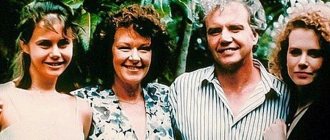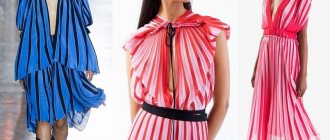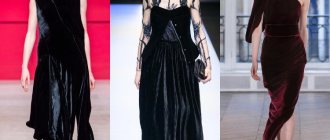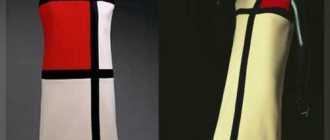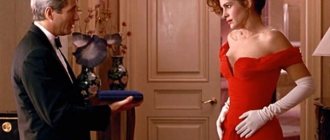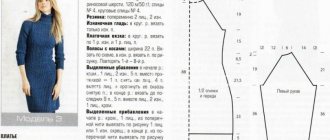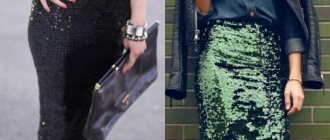Bold and the Beautiful: Nicole Kidman - 50
Today Nicole Kidman celebrates her fiftieth birthday. Having limited ourselves to the remark that it’s difficult to believe, we’ll figure out how the film career of a perfectionist, choosing complex projects and bringing her back to the Golden Age of Hollywood with just her appearance, took shape.
Kidman is used to relying on herself when working on the role. She is not afraid of getting tired or overworking, but she also remembers the notorious “chemistry” between artist and director. Without her, in the cinema, as in life, there is nowhere.
The recently defunct Cannes Film Festival, where Nicole Kidman presented four projects, including the second season of the detective series Top of the Lake and three auteur films - The Killing of a Sacred Deer by Yorgos Lanthimos, The Fatal Temptation by Sofia Coppola and How to Talk to Girls at Parties by John Cameron Mitchell, gave her the title of “prom queen”: the press decided so even before the start of the anniversary show. Shortly before this, the actress received nominations for the Golden Globe and Oscar awards for the film Lion, which sank into the soul of the Foreign Press Association and film academics. However, things didn’t go further than nominations. In between these events, HBO showed the mini-series “Big Little Lies” with Kidman in one of the main roles.
All this became the reason for the appearance of numerous materials about the life and fate of Kidman, analyzing her career, lists of her best films and memoirs about her marriage and divorce with Tom Cruise, whose fame, according to journalists, she certainly had to surpass in her time in order to exchange the status of “ex-wife” to the status of “big star”. Another such occasion is today, in which the actress, among other things, cannot avoid conversations about how she looks in her fifties: she belongs no less to the world of gloss, fashion and beauty than to the world of cinema. Those are the rules. The always reserved Nicole does not undertake to speak out against them, but she makes it clear: work - cinema and theater, which has recently returned to her life - comes first.
"Big Little Lies"
"Fatal Temptation"
And although Kidman’s career is usually measured by important milestones - filming in Stanley Kubrick’s last film, meeting and working with Lars von Trier, Baz Luhrmann’s cabaret and its resounding success, the role of Virginia Woolf, which brought her an Oscar - devastating criticism of her was heard no less often . For example, Nora Ephron’s comedy “The Witch” was not appreciated at all at the box office, where Kidman’s character twitched her nose funny from scene to scene.
The actress's philosophical attitude towards failure says as much about her as each new triumph. Kidman is generally a typical workaholic. A common thread running through her interviews is the idea that you need to give your best on the set, having first gotten used to your character enough to trust yourself. The directors with whom she worked, from Lars von Trier to Lee Daniels, never tire of talking about the actress’s courage and her demands on herself. And these words, repeated time after time, from project to project, do not at all seem like protocol compliments. Kidman's approach to acting has something of the farming spirit that is close to her: the understanding that without hard, exhausting work, nothing will come of it.
When choosing new projects, she is guided by the principle that Stanley Kubrick taught her during the filming of Eyes Wide Shut: never say “no” without trying. This explains the abundance in her arsenal of such different roles that lead far beyond the boundaries of large studio projects, and difficult films, in the work on which you can test your strength and take a new milestone.
"Eyes Wide Shut"
It was not by chance that Kidman ended up in the profession. Growing up in Australia, instead of heading to the beach on weekends, she would rush to her acting classes. Enviable self-discipline led to an early debut: already at 15, Kidman appeared on Australian screens. The roles became more and more significant, the projects became noticeable, and a look back confirms: perfectionism, trust in the director and the desire to work were always in her.
For example, in “To Die For” by Gus Van Sant, for the role in which Kidman received her first Golden Globe, she turns into a pretty provincial Susan, who is ready to do not much, but simply everything, to achieve her own goals. The actress got used to this image so deeply that it is impossible not to believe her: it is better not to stand between Susan and her dream of a career on television.
"To Die For"
In the same way, it’s hard not to be inspired by the story of the cabaret star Satine from Baz Luhrmann’s musical “Moulin Rouge!”, in whose life everything went wrong after meeting a half-destitute poet. Now it seems that the filming could not end with anything other than resounding success, but at the time of production there was no certainty about this. An ambiguous genre, dancing and singing actors who seemed to have confused the screen with the Broadway stage, kitschy scenery - all that ultimately led to recognition could also lead to failure. Kidman, after thinking about whether she could cope with the task on her part, nevertheless decided to take a risk and was right. And we learned that with her plasticity and vocals, things are no worse than with the skill of transformation: both she and Ewan McGregor, another lover of testing their strength, performed all the numbers without the help of understudies.
"Moulin rouge!"
The beauty that oozes from the screen in Moulin Rouge! fades and disappears in Stephen Daldry's The Hours. Nicole Virginia Woolf's heroine has not only talent, but also a depressive disorder and an endless cigarette in her hands. She spent every day of shooting, those few hours that Kidman’s nose turned into Woolf’s nose, trying to feel like a writer whose life had been taken over by a crisis. Working on the role, by the actress’s own admission, was not easy for her. She took the divorce, so often mentioned by the press, hard and subsequently said more than once in interviews that the words that Virginia Woolf was supposed to pronounce according to the script applied no less to herself. As a result, the actress received an Oscar for Best Actress, overcame her own crisis and proved that she can play not only flashy beauties.
"Watch"
Speaking in the same interviews about how much she wanted to work with Lars von Trier, she quickly achieved her goal. The director invited her to his experimental “Dogville,” and Kidman passed the next test with flying colors, playing Grace, who was largely based on herself by Trier.
"Dogville"
These few examples from the actress’s filmography can be diluted with dozens of others: Nicole Kidman films a lot, choosing not commercial projects, but those with a story. Big Little Lies, an HBO miniseries starring Kidman, Reese Witherspoon, Laura Dern and Shailene Woodley, is set in affluent Monterey, California, where several mothers take their children to first grade, setting off a story of friendship, rivalry and misfortunes, which are enough in every, seemingly even the most prosperous family. According to director Jean-Marc Vallée's idea, from the very first episode the heroes are also judged by secondary characters - other parents who have noticed, heard, seen and are now giving evidence. It quickly turns out that everyone has their own formed opinion about the main characters. One is overly ambitious and gets into every argument, the other is beautiful, but arrogant because she is silent, the third is a careerist, and therefore automatically a bad mother, the fourth is secretive, lonely and not at all wealthy, therefore, does not correspond to the image of the city. They are judged without their knowledge, and in this the world of the series resembles the world in which Hollywood stars are often forced to live. So it is not surprising that Nicole Kidman prefers her own farm and the production of homemade jam to noisy parties - the same original as the films with her participation.
Images of Nicole Kidman: from witch to ideal woman
of Style Files
is on air - a series of posts where I analyze the types and images of celebrities. Today we will continue our analysis of Nicole Kidman’s type and see how the features of her appearance influence the images and style of her heroines on the screen.
We have already figured out that in Nicole’s appearance there is an impression of danger, deceit, “witch notes”, which can be attributed to thin, pointed, “foxy” facial features. And this impression is enhanced by the red hair color of the actress. So it’s not surprising that her track record includes the role of a real witch.
still from the film “Practical Magic”
However, the image that the costume designers chose for the witch Nicole is more reminiscent of a forest nymph.
Dresses of green flowers, decorated with plant prints symbolically remind of the forest, of closeness to nature, soften the image and look rather romantic, talking about danger.
Nicole’s image as a blonde villainess, cold and intellectual, is much more dangerous and tougher. Here, stylists act exactly the opposite: changing red hair to blonde, natural curls to a clear “intellectual” haircut, dressing the actress in things with a clear silhouette, reminiscent of armor or imitating men’s clothing.
This image rejects naturalness, everything here seems to be artificial, which is why hostility towards the heroine arises.
And here this is what is needed, because we are talking about the main villain, a negative heroine.
And between these extremes there is a whole range of images, where in different proportions the cunning and sophistication characteristic of Kidman’s type, intelligence, aristocracy and danger are combined.
Thus, Suzanne, the main character of To Die For, where Kidman demonstrates the grotesque style of an insidious Barbie doll.
The heroine's outfits combine a classic silhouette with bright colors and playful patterns. As a result, Suzanne’s images look energetic, but somewhat doll-like to the point of childishness.
And because According to the plot, Suzanne likes to feel like a dangerous and even femme fatale, then the costume designers provide her with the appropriate things. The large and bright animal print (intentionally contrasting with the actress's delicate features) looks rough, creating an impression of cheapness and vulgarity:
Similar techniques, but in an absurdly superior form, were used by the costume designers in the film Paperboy, turning the sophisticated Kidman into the queen of plastic trash.
Everything here is deliberately exaggerated, redundant, unnatural. Everything about this woman is too much: her hair is too white, her tan is too much, her makeup and false eyelashes are too bright, her outfits are too bright. A vulgar interpretation on the theme of the same Barbie doll. And again, the “effect of artificiality” on Nicole causes hostility, an impression that repels the heroine.
It’s interesting that costume designers turn to this motif of the ideal [Barbie] doll more than once. Kidman's heroine turns from a sarcastic dark-haired intellectual into a blond "doll" in the film "The Stepford Wives." The sharp change in the screen image symbolically reflects the internal changes of the heroine:
Another image of the ideal woman at the crossroads of Brigitte Bardot and the Barbie doll is Claudia, the female muse in the new film adaptation of “Nine.” In dresses with a tightly cinched waist, with golden curls, Nicole Kidman in this role is a golden statuette, in fact, an Oscar in living female form. In these images, the emphasis is on sophistication, sophistication, and the actress’s characteristic appearance (thin waist, light golden color, emphasis on smooth shimmering textures). She is a dream woman, ephemeral and unattainable.
And finally, another ideal woman embodied by Kidman is Grace Kelly:
And turning to style... In creating images of these ideal women, artists use similar techniques: always a light color scheme, always a feminine silhouette, always smooth shimmering textures.
And at the same time, the accents in each image are placed differently, changing the overall impression.
Thus, in the image of Claudia, Nicole Kidman's aristocracy is complemented by sensuality - the hairstyle is reminiscent of Brigitte Bardot, the outfits are more sexy and open.
But in The Stepford Wives, Kidman looks like a “proper” Hollywood princess:
And finally, her Princess of Monaco is a perfect picture in the style of the 50s. It should be noted that, unlike Grace Kelly herself, who has a classic type, the more dynamic Nicole looks squeezed into a frame in some of these outfits.
And finally, another ideal façade that Kidman’s character conveys through her style:
Here the image of the ideal woman is more modern and realistic and is more in tune with the type of actress. Her outfits combine naturalness with aristocratic sophistication, which is more harmonious for the type of actress.
By the way, I already wrote in detail about the style of this heroine, Celeste from Big Little Lies, here.
Who do you think is Nicole Kidman's most stylish character?
Do you like posts like this? Then write what image and style of which celebrity you would like to see here. And don't forget to subscribe to my channel so you don't miss the next episode!
Source Alexandra Weil
